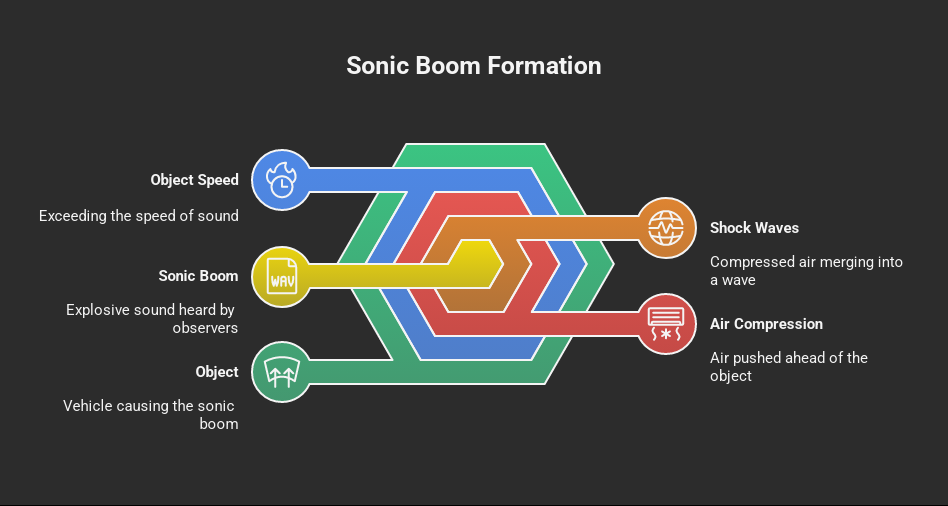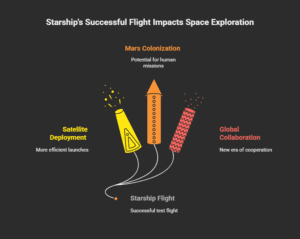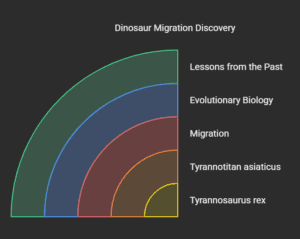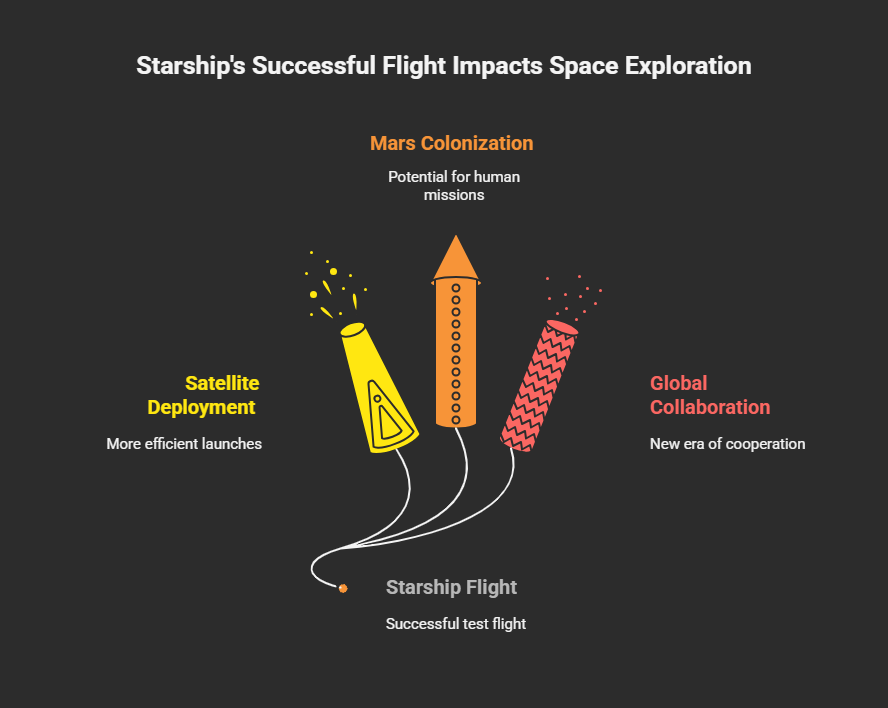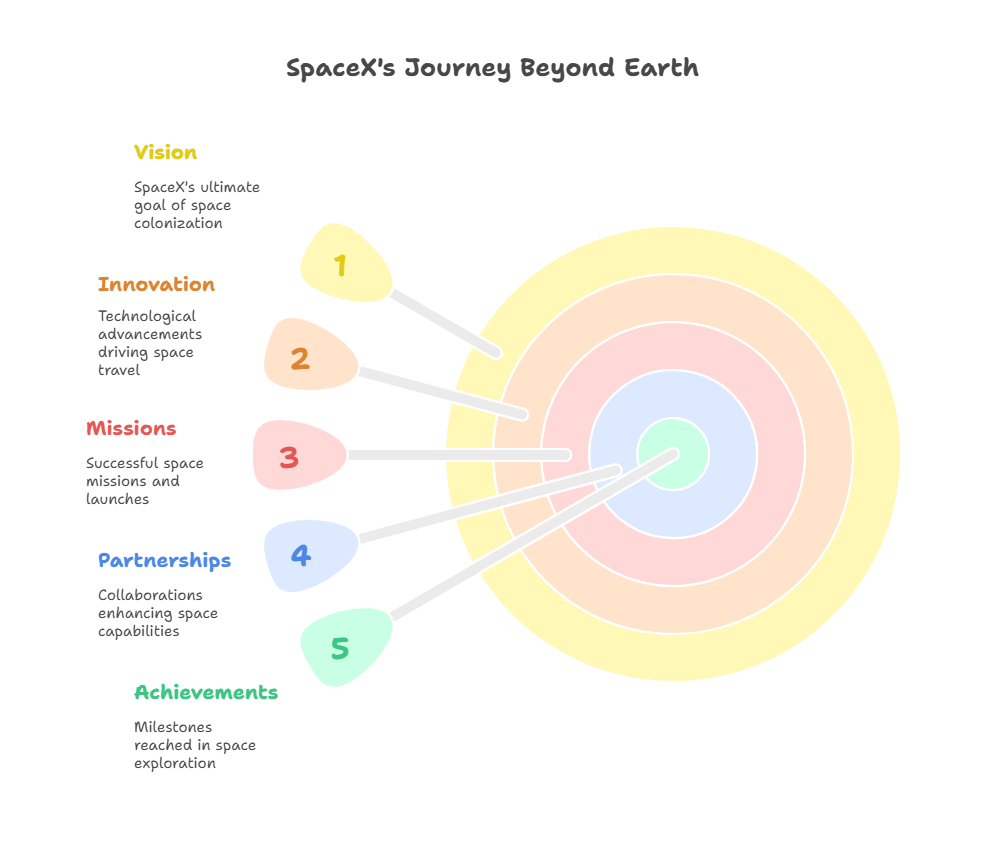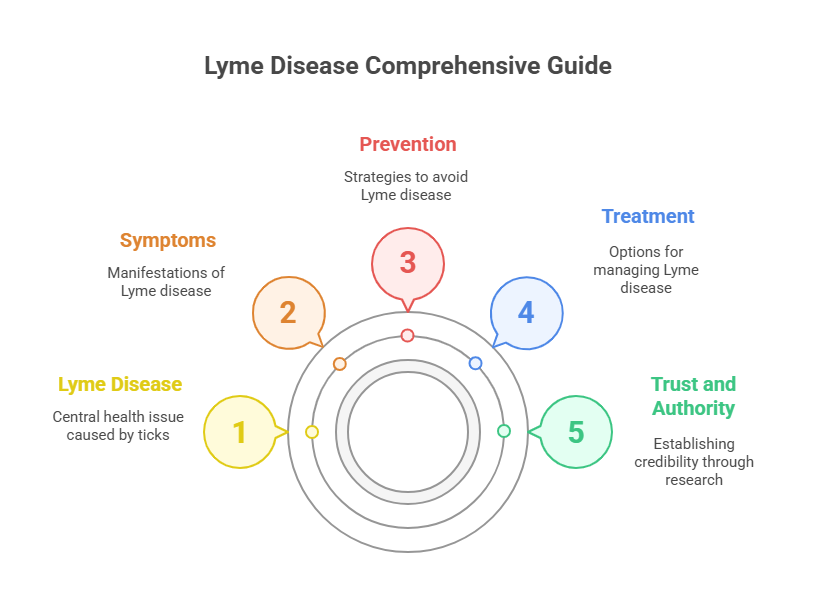Introduction
Has it ever happened to you that you heard thunder, then looked up and saw nothing? If you live in the reentry region of Florida’s Space Coast or California, it’s possible that you’ve just been thrilled by the Dragon spacecraft coming back to Earth with a thunderous sonic boom. We’ll examine this thunderous sound, the reason for it during reentry and how SpaceX engineers equip the Dragon to safely get through this intense part of the mission. Casual observers of space, learning about aerospace or with a simple interest in space travel will find all the answers they need in a way that anyone can understand.
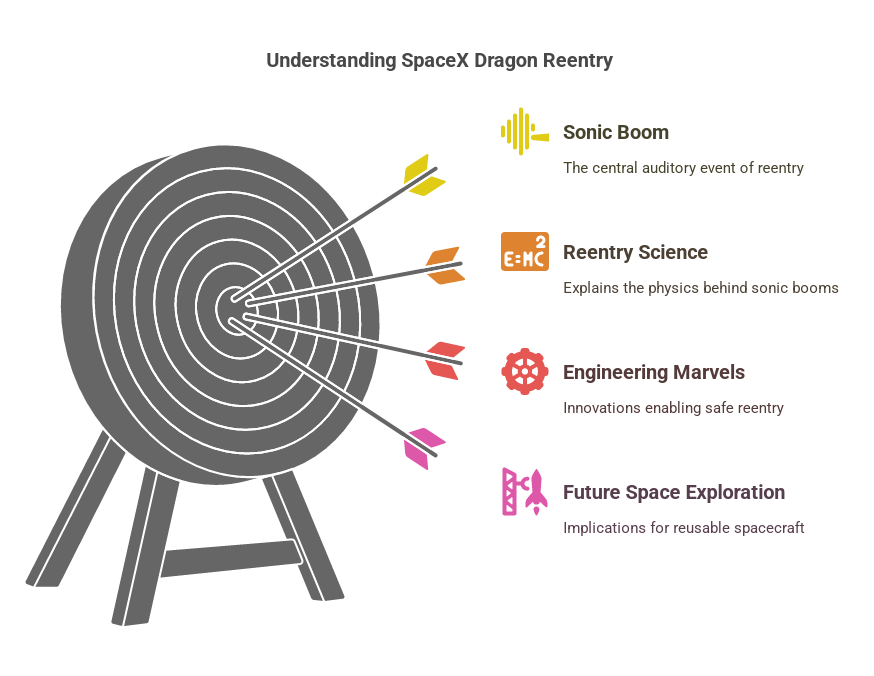
Exploring the Science That Produces a Sonic Boom from Space!🚀
What Do Sonic Booms Actually Mean?
Any time an object goes past the sound barrier, it causes a loud noise known as a sonic boom. As the object goes faster, it streams air in front of it and turns these shock waves into one big wave. Once these strong waves travel to us, we hear a momentary explosion which is known as the “boom.” The sound we hear as a sonic boom isn’t just loud; it also signals there is an important event in the sky. For the Jet Propulsion Laboratory at NASA.
What Makes the Dragon Produce a Sonic Boom?
Both the cargo and crewed SpaceX Dragon capsules are designed to reenter Earth’s atmosphere at over 17,000 mph . Once it slows into the upper atmosphere, the craft switches from flying at hypersonic to supersonic speeds. In this part of the mission, the thrusters produce shock waves all around the spacecraft, with the strongest effect seen at the sharp trunk module and heat shield. Eventually, shock waves brought down by the sky end up sounding like loudly heard booms or even feeling like vibrations. Around Cape Canaveral, local residents often say they can hear two sounds from rocket launchings: one from the nose and one from the tail of the spacecraft.
A Look at Reentry from the Orbit and Surface from Space
Seeing Godzilla Again through the Dragon
Now, we will analyze the important parts of Dragon’s approach to Earth. Deorbit Burn occurs when the spacecraft engine is used to lower the craft’s orbit. As soon as it separates from the ISS, Dragon uses thrusters to reduce its speed and begin to descend. The maneuver dips its orbit, allowing it to cross through the stripped layers of the atmosphere. This is a process in which the spacecraft passes through Earth’s atmosphere.
At orbital speed, the capsule enters the atmosphere and faces temperatures that climb up to three thousand degrees Fahrenheit thanks to friction caused by air resistance. Based on NASA’s PICA design, SpaceX designed PICA-X heat shield to protect the vehicle and whatever is inside. The game Sonic Boom Generation. It was mentioned above that during the fast descent, the Dragon produces the sonic booms that come from shock waves. They happen between 180 and 100 thousand feet above the ground, based on what the atmosphere is like. Ready to Get Connected : As soon as the vehicle slows under 350 mph, an initial set of two drogue parachutes is dropped and another four main parachutes open.
It now falls gently into the ocean which greatly reduces the speed at landing. Recovery Operations Within hours of the capsule hitting the ocean, SpaceX ships pick it up and bring it to land for inspection or payload removal.
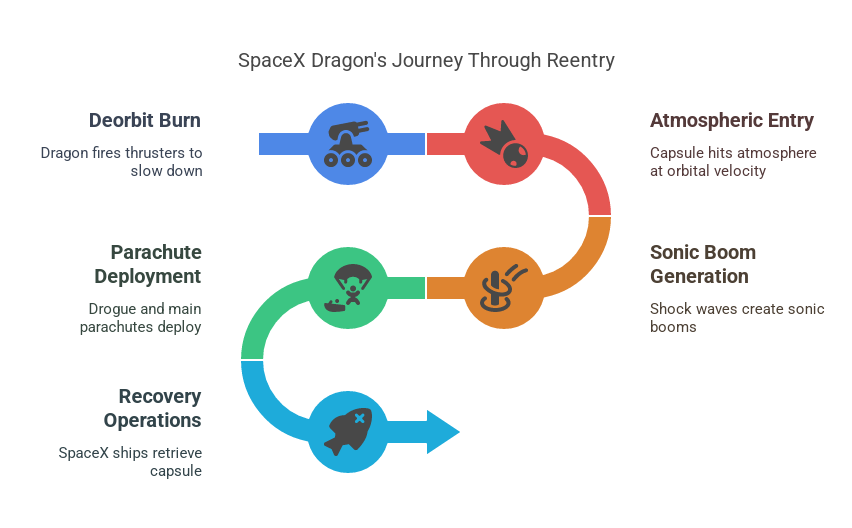
🔊 Who Hears the Sonic Boom from Space?
Geographic Impact Zones
The sonic boom from a Dragon reentry isn’t heard everywhere — it depends on where the capsule lands and which direction the shock waves are traveling. Typically, landings in the Gulf of Mexico or Pacific Ocean can result in booms being heard across coastal areas such as:
- Florida’s east and west coasts
- Southern California
- Parts of Texas and Louisiana
- Local weather conditions, wind patterns, and terrain also influence how far the sound carries.
Public Response and Community Awareness
When Dragon splashes down off the coast of Florida, residents in places like Tampa, Orlando, and even Miami have reported hearing the booms. Some mistake them for thunderstorms or distant explosions.
To avoid confusion, SpaceX and NASA often issue public advisories before reentry events. Social media updates, local news alerts, and even amateur radio networks help spread awareness so people know what to expect.
Engineering Marvels: Designing for Reentry in Space
Heat Shield Innovation
As previously mentioned, the PICA-X heat shield is a game-changer. Unlike older ablative shields that burn away, PICA-X is designed to radiate heat efficiently while maintaining structural integrity. This allows for reuse — a cornerstone of SpaceX’s mission to make spaceflight more sustainable.
Aerodynamics and Stability
Despite lacking wings or landing legs (unlike the Falcon 9 booster), Dragon is carefully shaped to maintain stability during reentry. Its blunt-body design creates a large shock wave ahead of the capsule, keeping the hottest plasma away from the structure.
This shape also helps to naturally stabilize the spacecraft — similar to how a badminton shuttlecock always flies point-first.
Real-Life Examples: Notable Dragon Reentries in Space
Demo-2: Historic Crewed Return (August 2020)
In a moment watched around the world, the Crew Demo-2 mission marked the first splashdown of American astronauts in a U.S.-built spacecraft since 1975. As the Dragon Endeavour capsule returned to Earth, observers along the Gulf Coast reported hearing the unmistakable double sonic boom.
NASA astronaut Bob Behnken later described the experience:
“It was intense but smooth — like riding inside a giant firecracker.”
CRS-22 Mission (June 2021)
During this cargo mission, Dragon made a rare daylight reentry visible from Florida’s east coast. Witnesses captured stunning footage of the capsule streaking across the sky, trailed by twin sonic booms echoing across the peninsula
💡 Why This Matters: The Future of Reusable Space craft
The ability to safely return spacecraft to Earth — complete with surviving sonic booms — is crucial for the future of space exploration. Here’s why:
- Cost Reduction: Reusable vehicles like Dragon drastically cut the price of sending cargo and crews to orbit.
- Scientific Return: Returning experiments from the ISS enables researchers to analyze data that can’t be transmitted digitally.
- Operational Efficiency: Faster turnaround times mean more frequent missions and quicker access to space.
- With upcoming missions like Artemis and potential Mars sample returns, mastering reentry dynamics and managing sonic booms will become even more important.
📢 Final Thoughts: A Thunderclap from Space
The next time you hear a mysterious boom rumble through your neighborhood, don’t jump to conclusions — it might just be a Dragon spacecraft coming home. Whether you’re watching online or lucky enough to witness it in person, a Dragon reentry is a reminder of how far we’ve come in spaceflight technology.
If you found this breakdown helpful, feel free to share it with fellow space enthusiasts! And if you’d like to stay updated on the latest SpaceX missions, consider subscribing below. We’ll send you alerts whenever Dragon is set to return — so you won’t miss the next sonic boom over your town.
Want more space facts? click on this link

